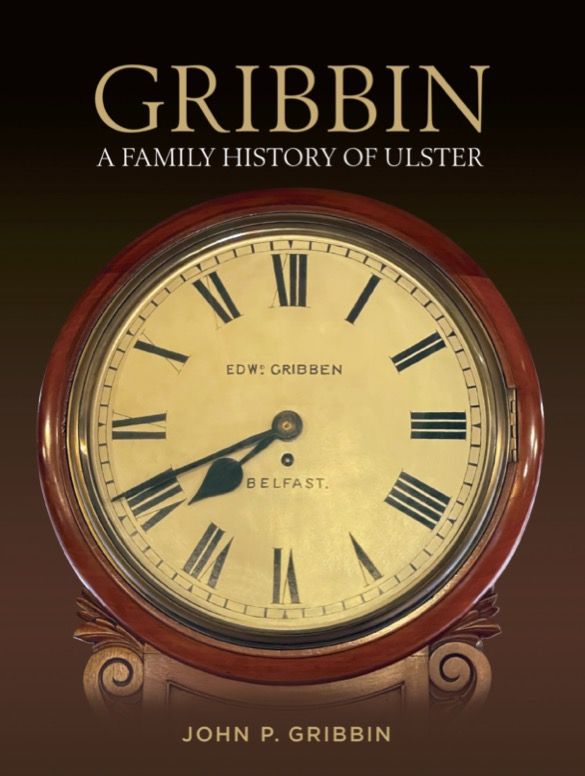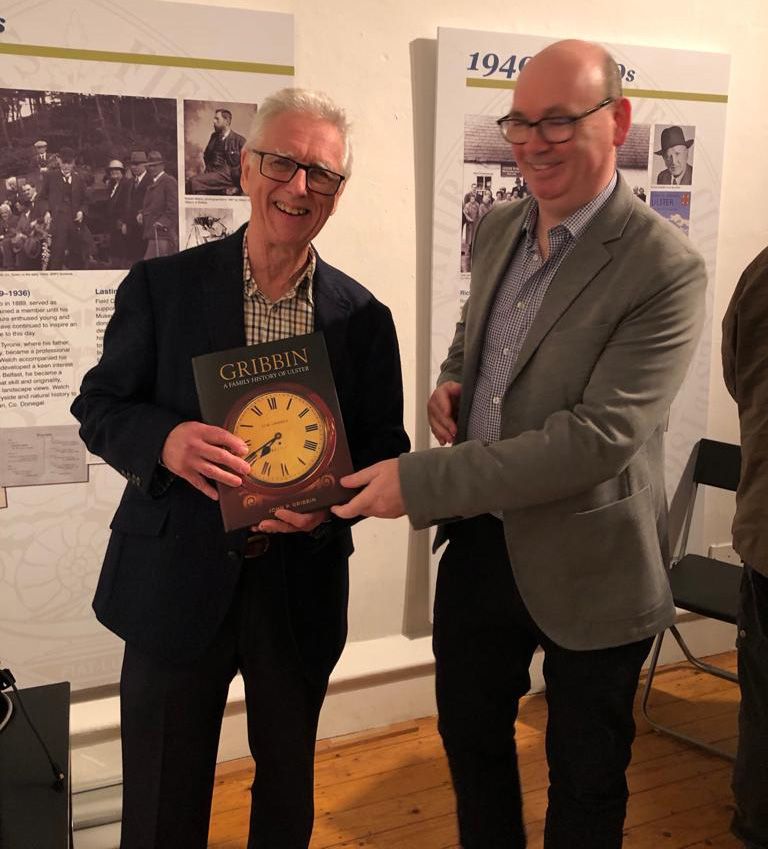A FORMER teacher has launched a new book tracing the history of his family name back through the centuries in Ulster and beyond.
John Gribbin launched 'Gribbin: A Family History of Ulster' in the Old Museum building at College Square North on Wednesday night.
Perhaps you’ve heard of Ciaran Gribbin, ex-frontman of INXS? Or Callum Gribbin, one-time starlet of Manchester United? Or Lewis Gribben, the actor, or Deirdre Gribbin, the composer, or John Gribbin, the distinguished astrophysicist? Or perhaps you’re a Gribbin, Gribben or Gribbon and are curious about the name.
But where does the name come from and what does it mean? West Belfast man John goes on a journey of discovery through the pages of his book to bring a fascinating story.
Many Gribbins were small farmers or shopkeepers. Some were soldiers. Some were doctors. One was both. Dr Hugh Gribbin from Dromore, County Down, was surgeon-general with the Turkish army. In 1886 he inexplicably attacked a police sergeant in Lurgan and fled to Belfast, where he was shot during a riot, and died in Armagh gaol.
Or there’s Brian O’Gribben, who killed a woman with a cudgel in 1614, spent time in Carrickfergus gaol and was then released, pleading “benefit of clergy”. If these unholy types are not your cup of tea, then try Eoin Ó Gribín or Sémus Ó Gribín, Gaelic scribes who flourished at the turn of the 17th and 18th centuries, whose manuscripts reveal altogether more heavenly preoccupations.
In the book, John has comprehensively reviewed all the source material available on the Gribbin family, since its first written appearance in 1602, charting their movements, their politico-religious affiliations and their socio-economic status over four centuries.

This one-name study works backwards in time, beginning with the author’s grandfather, who arrived in Belfast from Banbridge in 1907. The scope is promptly widened to take in all the Gribbins of Belfast and Banbridge, the Gribbins of County Down and of the whole of Ireland; the censuses of 1901 and 1911 being key resources.
In this way, the first four chapters paint a broad picture of who the Gribbins, Gribbens or Gribbons were and where they resided.
What emerges is that they were essentially an Ulster family of small farmers in the main, mostly Catholic, and mostly located in Derry, Antrim, Down and Armagh. The bare data is given flesh through the story of the author’s grandfather, Johnny, a shoemaker in the lower Falls and by a pithy but telling evocation of the politico-economic backdrop of those turbulent times.
Subsequent chapters take in John's father and grandfather, each time widening out to cover the known data about the Gribbins of their period as well as the historical backdrop to their story. The book tracks the family name through the eighteenth and seventeenth centuries. There are priests and farmers, doctors and Gaelic scribes, poor and rich, forceful and retiring. There is a chapter on the Gribbin DNA and one on Gribbin place names.
The result is much more than a fascinating collection of individuals with remarkable stories to tell. These vignettes help to bring the text alive – and in doing so, vividly capture a sense of the course of Ulster history itself.
For more information on the Gribbin/Gribben/Gribbon family and to order copies of the book, visit John's blog.








